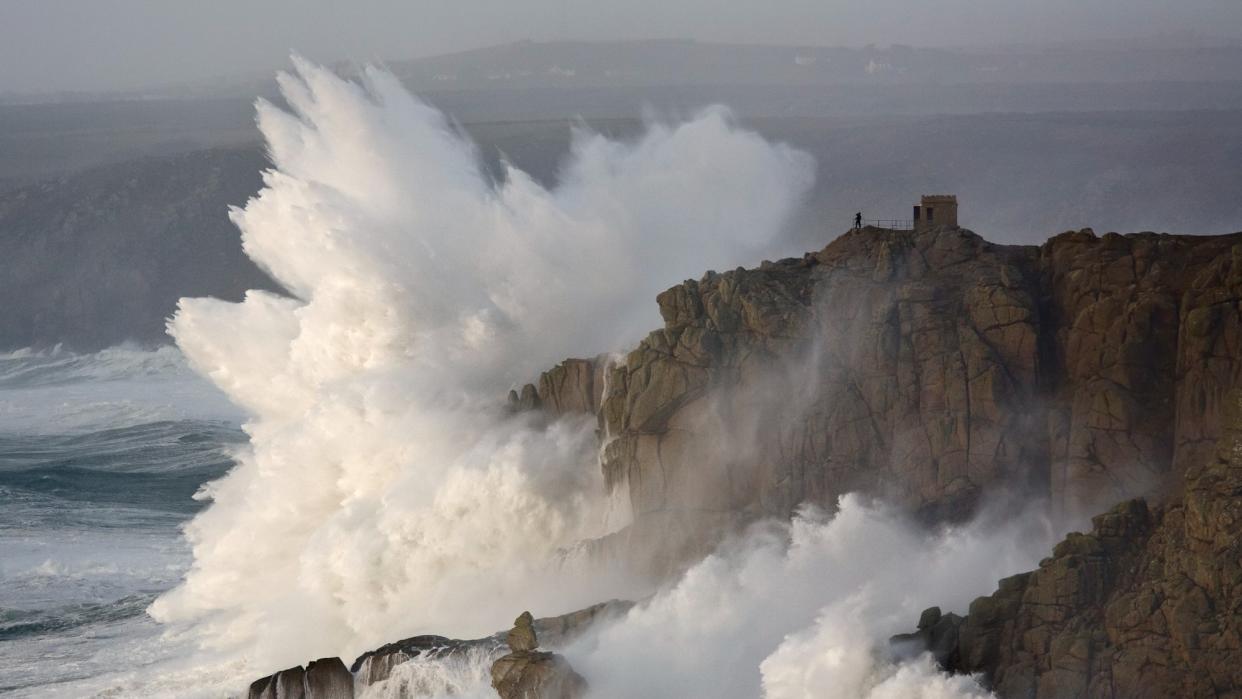Why are ocean waves getting bigger?

Climate change is making areas around the world more dangerous to live in, or in some cases uninhabitable. The ocean is no exception to climate change's effects. In 2023, oceans hit record-high temperatures that threatened marine life and brought devastation to many coral reefs. The warmer waters have also led to more and stronger hurricanes and storms forming and wreaking havoc on coastal regions. Now, scientists have also discovered that climate change is making waves, literally. That's right: Waves are becoming larger and stronger, which could cause even more damage to coasts and potentially worsen existing storms.
Why are waves getting bigger?
Bigger waves are a phenomenon that has been observed all across the world and can be attributed to the warming climate. "Global warming puts increased energy in the atmosphere, resulting in stronger storms with intensified winds that generate increased wave heights," oceanographer Peter Bromirski, told The Washington Post. "Further increases in wave activity along coasts potentially will follow, aggravating issues from higher tides associated with sea level rise."
Wave energy has been increasing over time, a statistic scientists discovered using seismometers. Those tools measure ground movement, usually from earthquakes, according to a study published in the journal Nature Communications. The most powerful waves were discovered in the Southern Ocean surrounding Antarctica, but the North Atlantic Ocean experienced the highest increase in wave energy over the past 40 years compared to its levels of increase historically. "As these waves interact with the coast and the seafloor, they push and pull the seafloor, and that creates a force," Richard Aster, author of the Nature Communications study, told San Francisco Chronicle. "And that force creates seismic waves that propagate all over the world."
What are the risks associated?
"If the waves are extreme," Itxaso Oderiz, a coastal hazard researcher from IHCantabria, told the Post, "sediment transport can be substantial, causing erosion and affecting coastal infrastructure," and "the water level can rise significantly, leading to coastal flooding." These factors need to be taken into account to "create resilient communities in the face of rising," Patrick Barnard, a research geologist with the United States Geological Survey, told The New York Times.
In addition, this phenomenon is predicted to worsen. For example on the coast of California, average winter wave heights have increased by almost one foot since 1970, when scientists claim the Earth started warming at an accelerated pace, according to a study published in JGR Oceans. The occurrence of large wave swells of at least 13 feet are also "happening a lot more often, occurring at least twice as often from 1996 to 2016 than from 1949 to 1969," The Associated Press reported.
"As sea level rises and the waves get bigger, you get an aggravated effect in terms of coastal impacts," Aster explained. Because of this, coastal areas will become increasingly unsafe to inhabit and may require people to relocate further inland. "It's just one more indication that things are going in the wrong direction," Gary Griggs, an oceanographer at the University of California Santa Cruz, remarked to KSBW. "It's like a giant chemistry experiment, only we can't turn it off." He added, "waves are getting bigger, more powerful, the weather's getting crazier. So that's going to be more impact on the shoreline."
